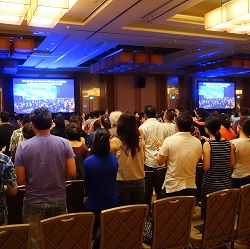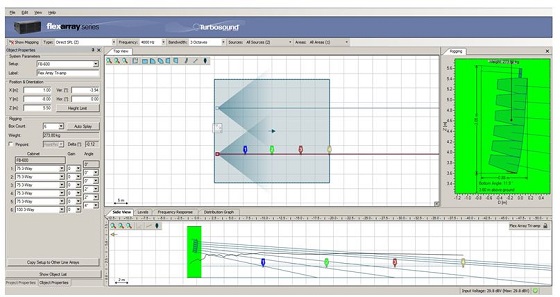
10. Other Stage Supports
Stage monitor loudspeakers can be used to feed the required mix to the musicians and singers.
In a modern band with drums and electric guitars, the stage can get pretty loud.
For the stage monitor loudspeakers to be heard, the volume has to be cranked up. But this can cause undesirable sound spill over into microphones, non-targeted musicians and singers and to the audience.
Hence, it is common for musicians and singers to adopt the use of IEMs (in-ear monitors) to resolve this sound spill over issue. For more freedom to roam on stage, wireless IEMs are often utilized.
In the same manner, wireless microphones allow singers and some musicians freedom to roam around on stage.
All these wireless devices require close support in ensuring that the correct device is given to the right musician and singer, the devices are appropriately positioned, and batteries are new or fully recharged before the start of the worship.
In addition, due technical consideration must be given to operation involving more than one wireless transmitting device to avoid radio frequency interference caused by intermodulation distortion especially when transmitting devices are operating in close proximity of each other.
Hence, the transmitting frequencies from wireless devices are usually carefully chosen to avoid such interference from intermodulation as well as from known radio frequency sources such as television stations or other wireless devices. Prior complex frequency allocation computation and dedicated radio frequency spectrum analyzer may be employed to monitor for interference free channels for trouble-free transmission of wireless devices.
Also, there is maintenance work such as sanitization of the microphones and IEMs. Visual inspection, continuity and contact checks for cables and connectors are also required to keep all the sound equipment in tip top condition.
All these considerations and arrangements involved beyond just good technical skills in dealing with sound equipment but also good inter-personal skills especially with the musicians and singers since the main function is to support these people who are on stage.
Sound Reinforcement
The sound mixer typically output in left-right or for some cases in left-center-right configuration. There may be auxiliary outputs to feed to other locations such as rest rooms and waiting areas. For auxiliary-fed subwoofer configuration, sound sources which have low frequency contents such as the kick, toms, bass guitar or CD sources are fed to a dedicated mixer auxiliary channel where this output is then used to feed the subwoofers.
All these left, center, right outputs as well as the auxiliary outputs are then fed to loudspeaker processors which then in turn feed the power amplifiers which drive the various loudspeakers. The next section describes the importance of the sound reinforcement system design, optimization and operation. Also due considerations must be given to room acoustics and the quality of the sound equipment especially for the loudspeakers.
11. Sound System Design
Before the loudspeakers and other sound equipment are being installed, the sound system must first be designed. The design process usually begins with the understanding of the overall sound system requirements. The next step involves the choice of appropriate loudspeaker models as well as the positioning and aiming of these loudspeakers.
Reputable pro audio loudspeaker manufacturers allow sound system designers access to computer simulation software that can aid in this design process. Refer to Figure 4 for an example of a computer simulation of loudspeaker line arrays.
Figure 4: Example of a computer simulation of loudspeaker line array performance parameters.
The user can input the venue layout in 3 dimensions, choose the appropriate loudspeaker models and then position and aim the loudspeakers to see the overall sound pressure level distribution and frequency response at various locations. Since this is a computer simulation, it allows the user to try as many loudspeaker positions and aiming angles and gain settings as required to determine if the intended design goals can be first obtained before any physical installation takes place.

